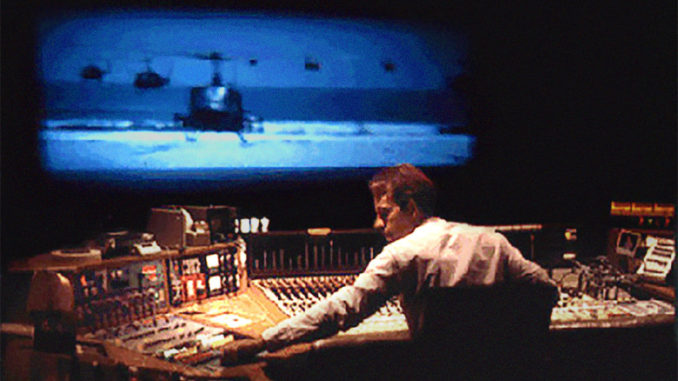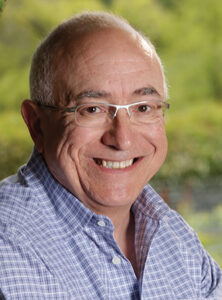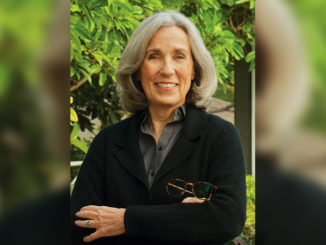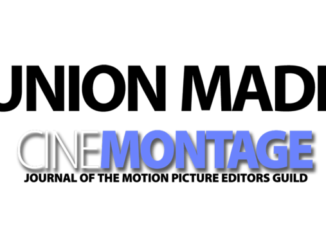
“Making Waves: The Art of Cinematic Sound” tells the story of sound in movies from the emergence of talkies in the late 1920s to the films of today.
Director Midge Costin — a noted sound editor who teaches at USC — traces that history through interviews with a number of veteran sound professionals, including Walter Murch, Bobbi Banks, and Ben Burtt, along with directors such as Christopher Nolan and Barbra Streisand and many more.
What results is a vibrant shout-out for a craft that many sound editors feel is often scandalously slighted.
IndieWire called “Making Waves” — set for release October 25th — “an erudite and impassioned documentary that does its damnedest to prove that we experience movies with our ears as much as we do with our eyes — perhaps even more so.”
CineMontage asked veteran audio designer Randy Thom, who appears as an interview subject in the movie, to comment on “Making Waves.”

Why do you feel a picture like “Making Waves” is important? What does it tell us about the history and practice of movie sound?
Randy Thom: It’s very difficult to be analytical about sound, even talking about sound is hard because our vocabulary of sound terms is so limited. It’s thrilling to me to see how successfully “Making Waves” expresses sound ideas and the sound process.
One of the main themes of the film is how sound crews have adapted to changing technologies and increased artistic ambitions, often overcoming cost pressures from producers. Do you think that was true in the past, and if so is it still true today?
“Making Waves” tells the history of film sound in a way that is enthralling, informative, and accurate. It even opens windows into the “politics” of sound, including the resistance by the management of the big studios to the very idea that sound is important, that it’s worth spending money on. That resistance continues even today. Far too often the decision to invest significant money in a film’s sound only comes late in the game, when everything else has failed to improve the movie.
Another theme is that general consensus seems to elevate visuals above sound in appraising movies. Why do you think this bias exists?
It’s undeniable that as humans we tend to be more conscious, more aware and analytical, about what we see than we are about what we hear. That leads too many of us (including the heads of movie studios and even film directors) to believe that visual images are more important than sounds. What those people fail to understand is that it’s often the stimulus that we are not aware of that affects us most deeply. Sound is film’s incredibly powerful secret weapon.
You appear in the movie, both as an interviewee and in archive footage. How did your interview come about? Your work on “Apocalypse Now” is cited – what else can you tell us about working on that picture that didn’t make it into the final cut of this movie?
Midge Costin asked me whether I might want to appear in “Making Waves.” I knew about Midge’s experience working with sound and teaching it, and my assumption was that she was capable of making a great film about sound design, so I immediately agreed to be a part of it.
Regarding my experience on “Apocalypse Now,” one of the many things that distinguished its process from most other films was the age and experience diversity we had. [Francis Ford] Coppola and [Walter] Murch hired many people to work on the movie that had limited or no experience working in film, but lots of experience in related fields. I was one of those people, having come from radio play sound design. The chemistry that resulted from mixing seasoned veterans with young people like myself was magical. Each group informed, challenged, and energized the other in very positive ways creatively.
What’s your personal reaction to the film? How well do you think it captures the reality of sound work?
I find “Making Waves” to be remarkably accurate in terms of capturing how the work of film sound is done. Too often the work is depicted as being all about technology, partly because it’s easier to get images of people operating equipment than it is to get images of people wrestling with sound ideas. This movie does an admirable job of shifting the focus to the creative process and away from turning knobs and pushing buttons.
Some sound editors have complained it’s tougher to find work today – again, because of cost pressures. Editors and assistant editors are often asked to map out a template of the sound design before a sound team even starts working. Do you think this trend will worsen? Why or why not?
I think more people in the industry are aware of the importance of sound today than there were forty years ago, when I was new to the work. But the dial has only moved a few degrees in the right direction, and needs to go way, way further. At the same time, budgets are tending to get smaller and schedules shorter. The only way to do interesting work is to experiment, which takes the kind of time and money that are increasingly deemed to be unaffordable, which is tragic. I’m optimistic about the status of sound work improving in the future, but this trend toward cost cutting is a threat to every creative craft, and a threat to the quality of the films we make.
What’s your prediction for the future of the industry? Would you tell a young person interested in moviemaking today to think about sound work? Why or why not?
Of course I would encourage anyone interested in sound work to pursue it. Ultimately you do it because you love it, regardless of the challenges.
But I would also tell them not to be naive about the hurdles they’ll encounter. Sound is generally undervalued as a creative asset, and sound people are undervalued as creative contributors. That isn’t going to change industry-wide anytime soon, but the work itself is deeply worth doing, the struggle will continue, and there are enough filmmakers and even enough executives who do appreciate the power of sound to give me hope that someday that minority will be the majority.





